Italy's Domus magazine bring us eco-modern beauty: the forthcoming Burning Man temple, and Bologna's Museum of Girls and Boys

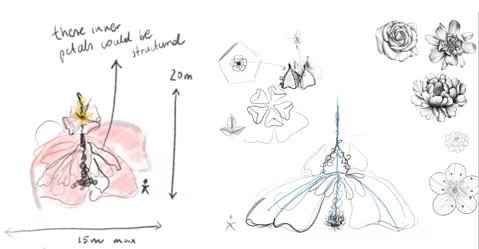
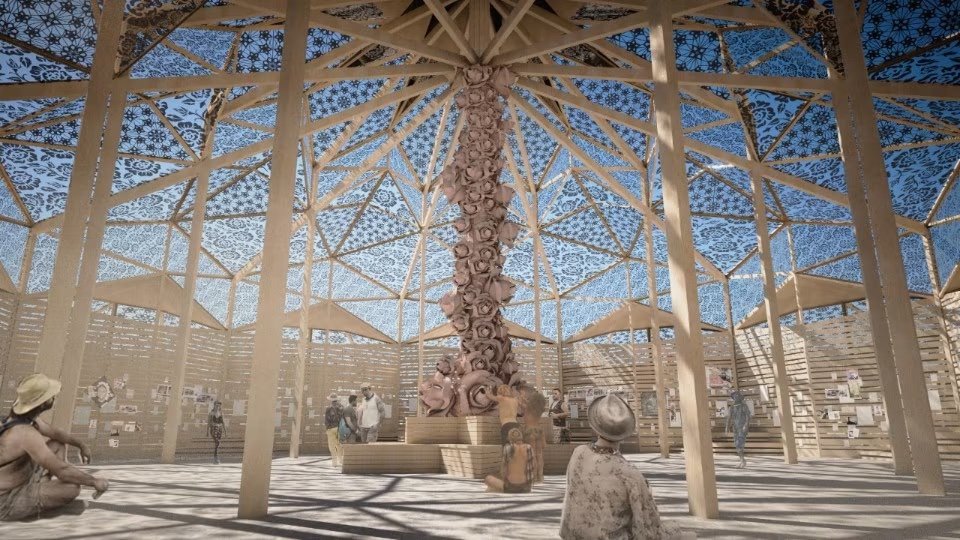
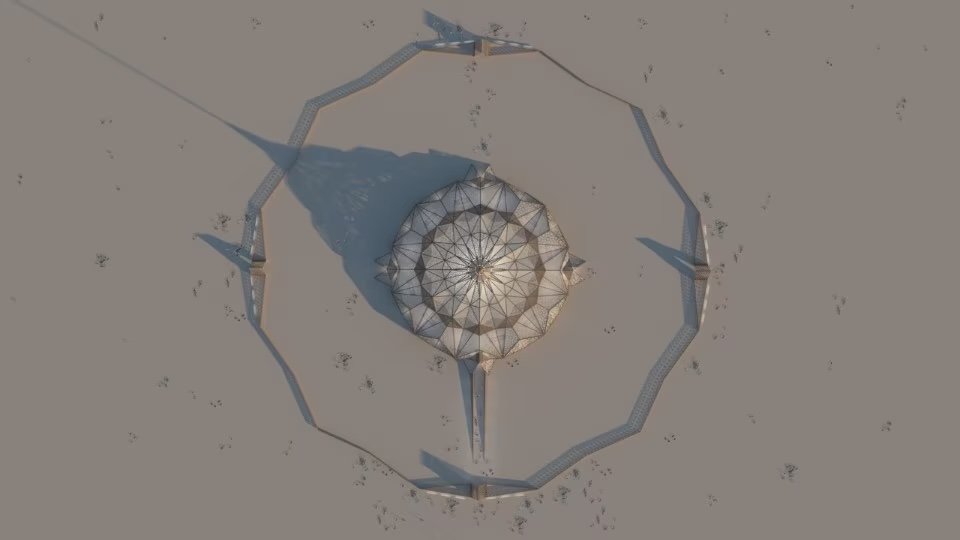
We enjoy the Milanese cool of Domus magazine, and we love these two design-news items from their current website. Eye candy, but also delivering sustainable wellbeing (though for quite different audiences).
2023’s Temple For Burning Man
Above is a slideshow of the proposed construction for the Burning Man festival (Aug 27-Sep 4), by Polish artist Ela Madej, in collaboration with Reed Finlay. As Domus writes:
…the temple will serve as a space of high symbolic value to accommodate all the experiences and offerings of the community and will be built by a large group of volunteers.
The structure – developed from a 12-star plant – looks like an upside-down desert flower, with a stem reaching up into the sky, serving as both a beacon as well as a sundial, and at night it will glow with soft and warm light.
The central gathering space – called “Heart Chamber” – houses the Rose Altar, a soaring and backlit element that will spread a slight glow and that will be decorated by about 100 large and medium-sized wooden roses and hundreds of other smaller flowers. The ceiling panels will be decorated with traditional lace floral motifs, typical of Eastern Europe.
The altar will be placed on a star-shaped platform and will connect to the roof becoming an external spire, representing the stem of the flower.
BOLOGNA’S MUSEUM OF GIRLS AND BOYS IS A YELLOW DELIGHT
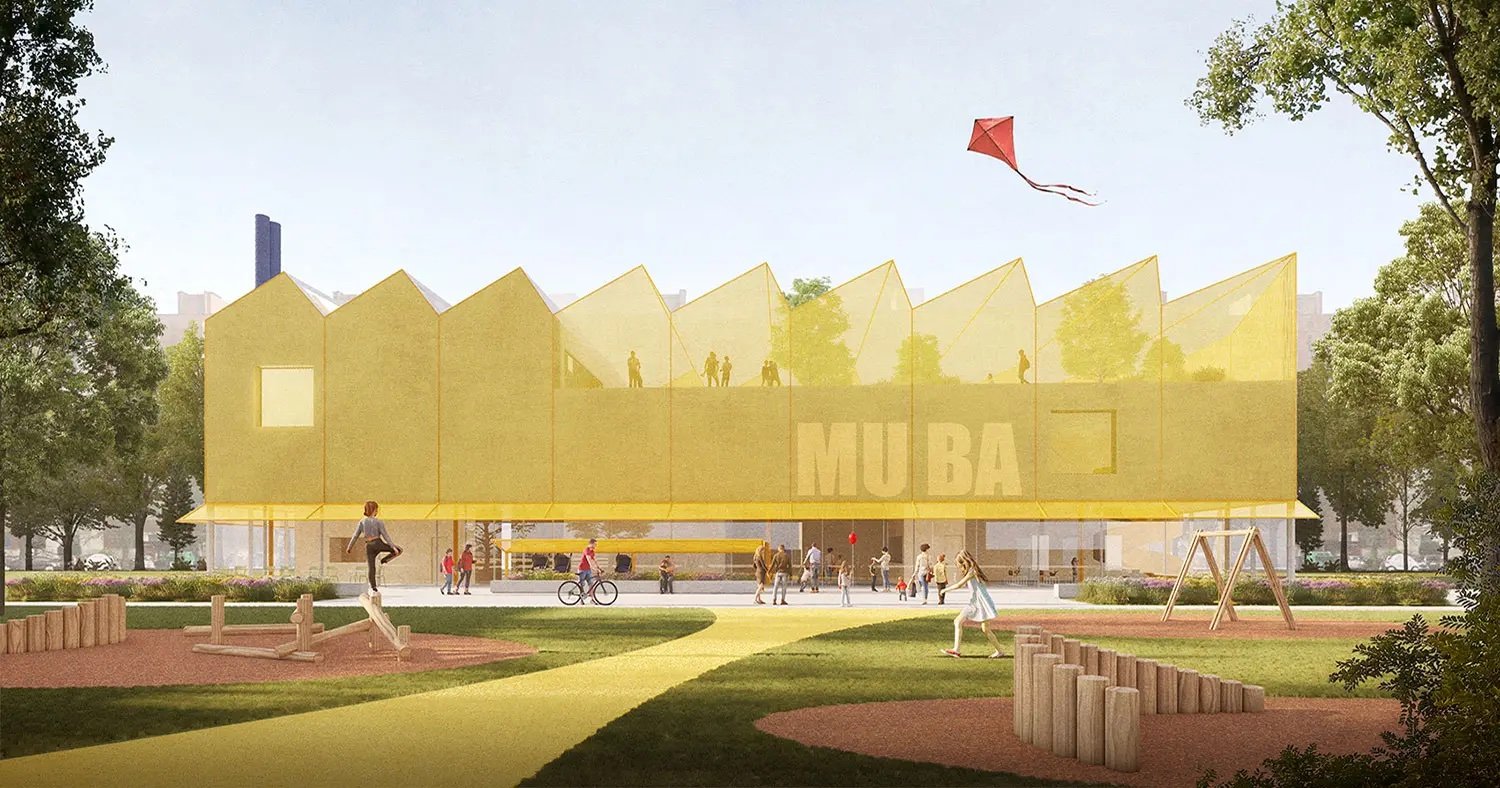
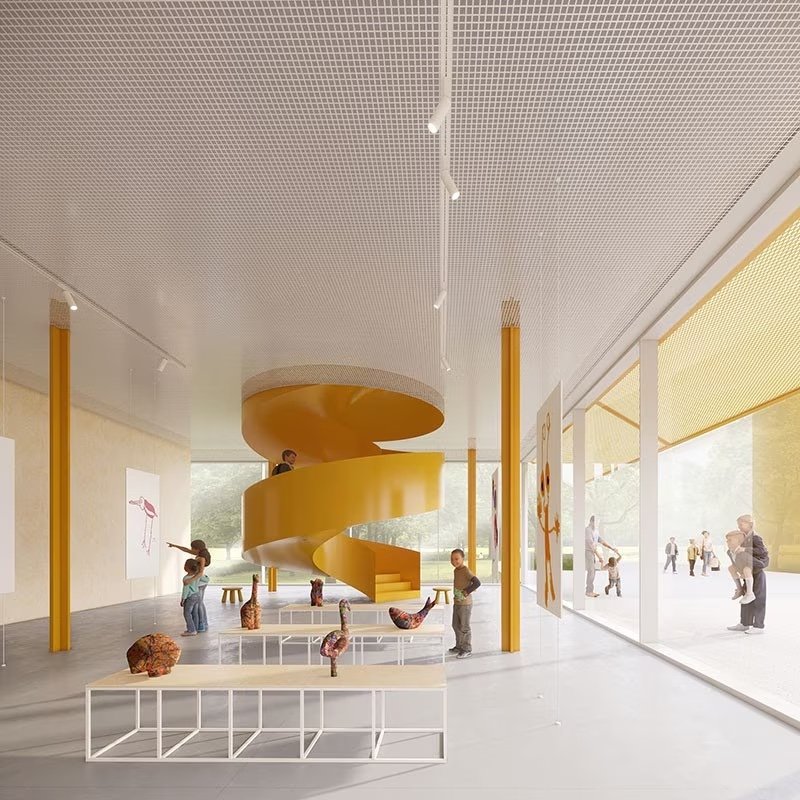
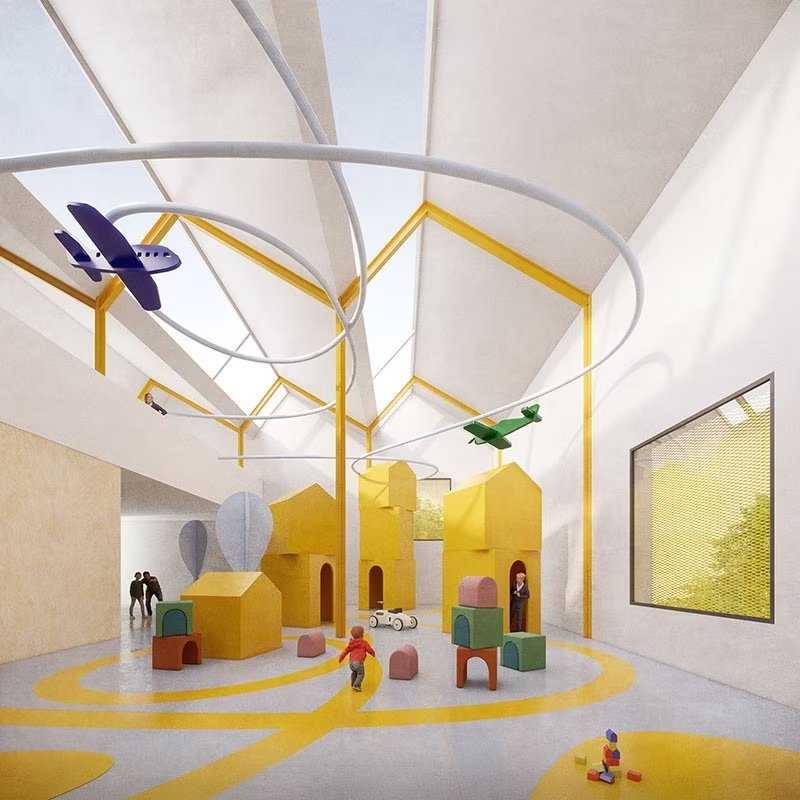
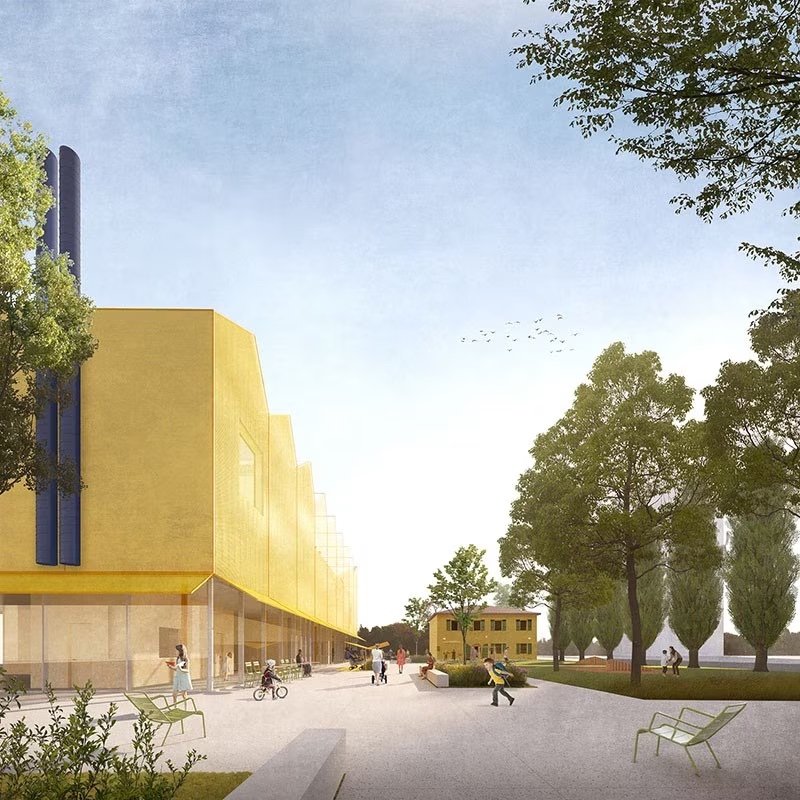
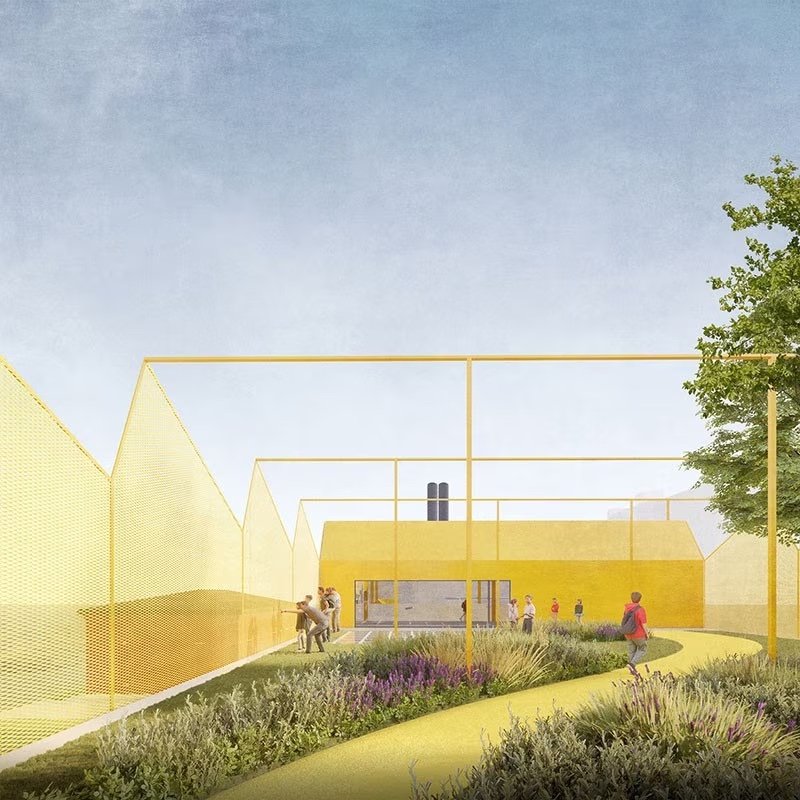
From Domus:
The Roman studio Aut Aut Architettura – particularly sensitive to the design of spaces that meet the needs of children – won the competition held by the city of Bologna to create, in the peripheral area of the Pilastro district, the MUBA, or the “Museo delle Bambine e dei Bambini” (“Museum of Girls and Boys”).
The project – with extremely flexible spaces – is characterized by the presence of yellow, the primary color much loved by children, linked to the sun and joy. The shape of the structure, on the other hand, evokes the geometry of the factories, tending to preserve the simple shape of the regular polygon as a container of creativity, inspired by the principles of the Italian pedagogue Loris Malaguzzi (founder of Reggio Emilia schools).
Part of the Impronta Verde (“Green Footprint”) project and funded with PNRR resources, the MUBA will complete the triangle dedicated to culture and sociality for all ages. The construction of the museum involves an investment of 3 million euros, and the use of prefabricated X-LAM panels, to ensure reduced construction times and a low environmental impact.
